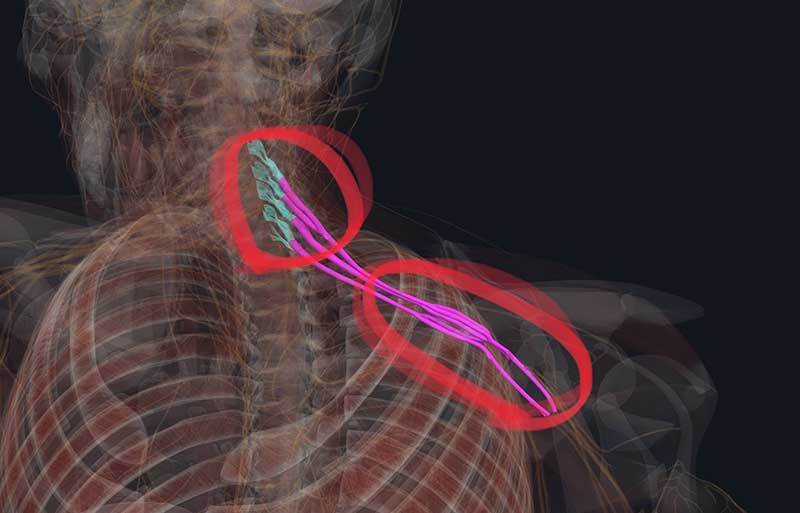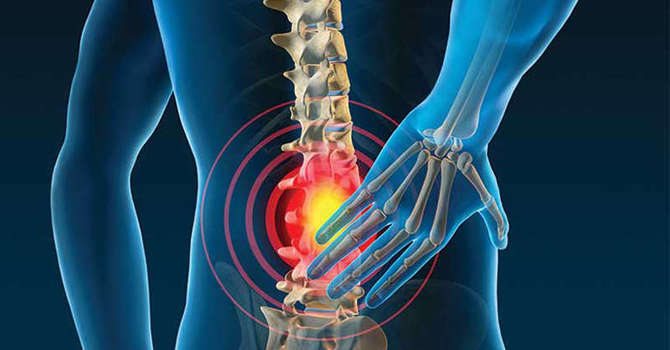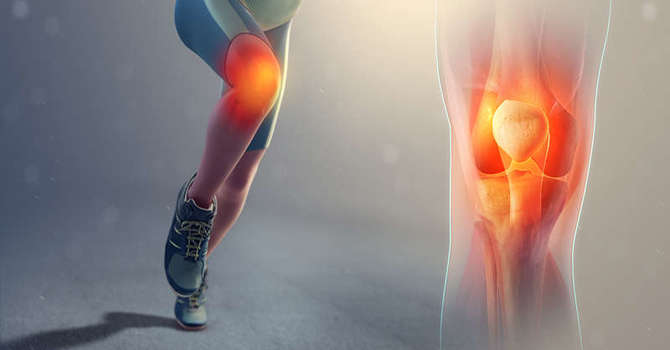
The Nerve Problem You Didn’t Know You Had
Chronic pain can have several sources, one of these being nerve pain that can range from simply annoying to debilitating and excruciating.
And, unfortunately, determining the exact cause and finding relief from nerve pain can often be elusive.
One of the most common causes of nerve pain is a can often as “nerve entrapment”. This is sometimes a temporary condition resulting from undue pressure on a nerve, often in an arm or leg. However, chronic nerve pain from entrapment is a condition that can usually be treated with conservative care.
In our office, this is known as nerve compression syndrome, compression neuropathy, or as entrapment neuropathy. It is as a “medical condition caused by direct pressure on a nerve.” More commonly, it is referred to as a trapped nerve. Although it might actually be an instance of nerve root compression, which can be caused by a herniated disc, for example. Occasionally, someone can suffer nerve injury by a single instance of physical trauma. While this can certainly result in nerve pain, and is in one sense a compression neuropathy, it’s not typically a case of nerve entrapment.
Nerve Entrapment Signs and Symptoms
Typically, an individual will experience some level of pain, tingling, numbness or a burning sensation, and even muscle weakness. The tingling and numbness are limited to the area of the body affected by the corresponding nerve that is impacted.
Depending on the root cause of the entrapment, these symptoms may start immediately after a trigger, or as much as several hours or days later. In many instances, never pain is less common than tingling or numbness as a symptom of nerve entrapment. Although an uncomfortable burning sensation, can often occur as well.
Because these symptoms affect one part of the body, depending on which nerve is compressed, nerve conduction studies can be used to help confirm an accurate diagnosis. While surgery may help to relieve the pressure on the nerve, in some cases, it does not always bring relief from all the symptoms.
What Causes a Trapped Nerve?
Most people have experienced the odd and annoying sensation of having their arm “fall asleep.” While not usually painful, people usually describe it as a feeling of pins and needles, crawling skin, or numbness. In severe cases, a limb can be completely numb and temporarily immobile. What they are experiencing is known as positional paresthesia – a “burning or prickling sensation” that usually occurs in the limbs, hands, and feet.
Most commonly, the cause of parasthesia is simply a person’s position at a given time. For example, an arm can fall asleep because a person is lying in a position that is putting pressure on a nerve in the limb. Typically, positional paresthesia is harmless and only occurs when a nerve is under sustained pressure. The sensation usually goes away after a person changes position.
Another common, but temporary, cause is a nerve being compressed by a prolonged or repeated external force. This can be something as simple as someone having their arm resting over the back of a chair and unwittingly compressing the radial nerve or resting their elbows on a table for an extended period of time, which can press on the ulnar nerve. These are examples of temporary and usually harmless conditions that are similar to chronic nerve entrapment.
Tingling or Numbness
When the pain, tingling or numbness is chronic, the cause is usually due to an issue in the body causing the compression and is termed entrapment neuropathy. The physical structure causing the pressure can sometimes be a lesion such as a tumor, ganglion cyst or a hematoma. However a more common cause is an expansion of the tissues around a nerve in a space without enough room for this to occur.
This is what happens in the case in carpal tunnel syndrome, for example. Sometimes deep scar tissue and adhesions from old traumas or overuse can form and entrap a nerve. The result can be chronic and even debilitating pain along with tingling, numbness and muscle weakness.
Finding Relief From Nerve Pain
Internal tissue scarring, or adhesions, can from injuries associated with repetitive strain, or acute athletic injuries. And, unfortunately, these adhesions may develop along the path where a nerve travels.
These adhesions can prevent normal and smooth movement of the tissues with their surrounding structures. Causing problems such as chronic pain, joint stress and nerve entrapment. They can also cause friction or improper interaction with nearby structures resulting in inflammation. Over time, inflammation will build leading to pain, fluid accumulation and restricted motion and flexibility. And, in many instances, nerves can become enveloped in the tissue and compressed
Healthy and unobstructed muscles glide smoothly and cleanly across other muscles, tendons, ligaments, lymphatic channels and nerves. However, if there are adhesions are present, the result is often friction and restriction of normal movement. In addition, nerves can become entrapped in the tissues affected.
Specific techniques which are used in our office can be used to release scar tissue, or adhesions, in the muscles and fascia. Which is the smooth connective tissue covering of muscles. Soft tissue injuries created by scar tissue can’t be detected by machines or orthopedic tests. As a result, we can use our hands or Graston Instruments to determine where the adhesions are and how severe the soft tissue injury is, simply by touch.
This approach is generally performed with a direct contact from us to the patient’s skin. We find the area to be worked on and either have you actively move a body part or passively move the body part. Our contact coupled with your movements is what allows the adhesions to separate.
You Can Get Relief – Let Us Help
At R3 Integrative Health, we can effectively treat nerve entrapment and, with time and patience on your part, bring relief from pain. Our overall goal is to identify why and how your nerve is compressed and then correct it with as little pain as possible, so you can return to life without fear of it returning.
Please, contact us now to ask any questions you may have or to set up an appointment. There’s no reason to continue living with pain when there is a way to treat it.

Ricki Porter
Contact Me



